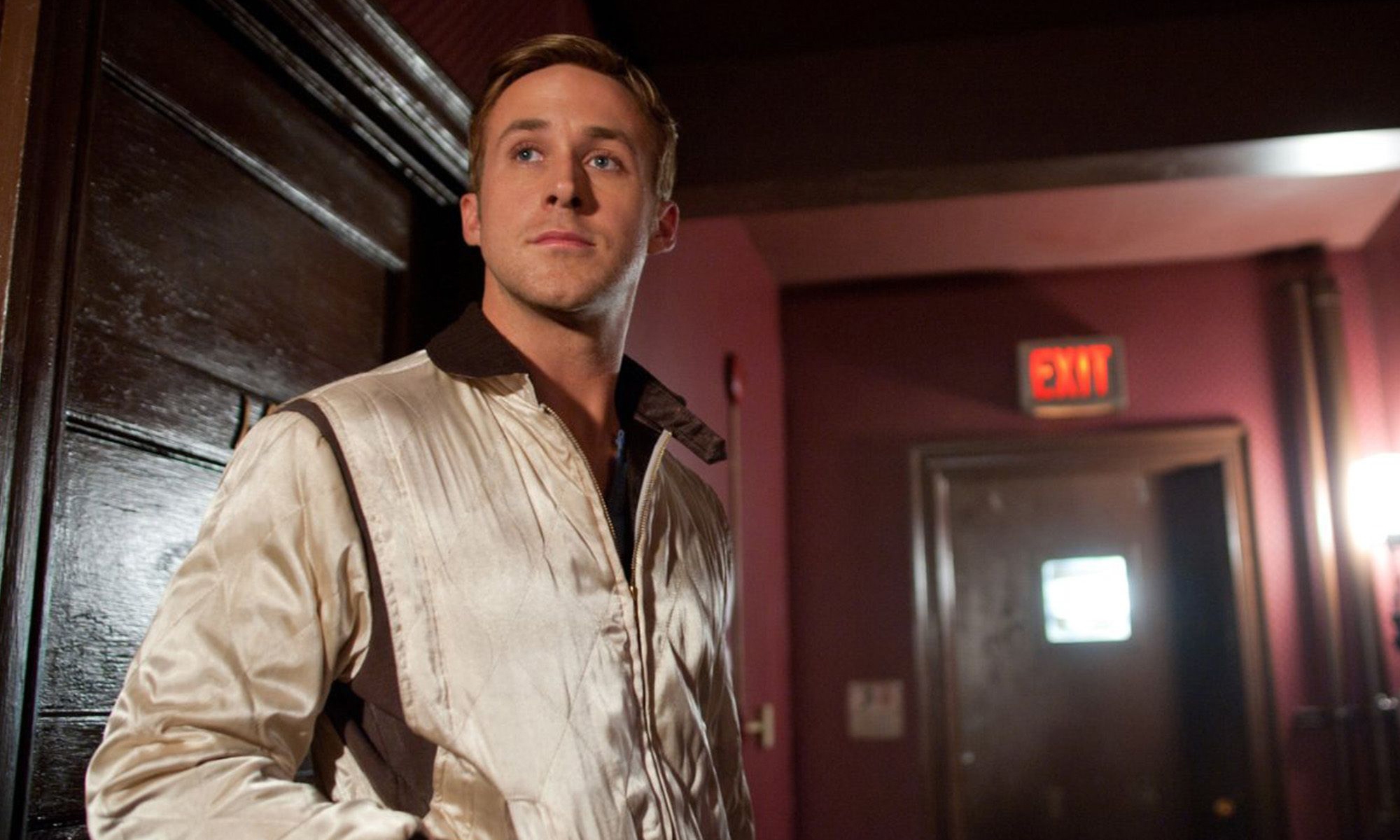
Drive: Road Warriors
Newton Thomas Sigel, ASC and director Nicolas Winding Refn craft a violent fairytale on the streets of Los Angeles.
It’s day 11 on the shooting schedule for Drive, the first Hollywood movie from Danish director Nicolas Winding Refn, who made his name on the international stage with such projects as the Pusher trilogy, Bronson [AC Oct. ’09) and Valhalla Rising. Refn has invited AC to the set, built on the fourth floor of Los Angeles’ Park Plaza Hotel. With a blanket wrapped snugly around his waist, the director leads the way down a faux-brick hallway that opens into a room featuring four mirrored walls outlined with vanity bulbs — the dressing room of a strip club. It’s time, Refn says, “to place the girls.”
“It’s almost a mythological story, not a story about today or yesterday or tomorrow, so it was important that the movie have an almost indefinable time period.”
Based on the crime novel by James Sallis, Drive revolves around the unnamed Driver (Ryan Gosling), who spends his days as a Hollywood stunt driver and his nights behind the wheel of getaway cars for members of the Los Angeles underworld. In order to protect his neighbor, Irene (Carey Mulligan), he agrees to help her ex-con husband, Standard (Oscar Isaac), pull off an easy heist. But when the job goes horribly wrong, Driver has to cut a bloody swath to guide Irene to safety
“It’s almost a mythological story, not a story about today or yesterday or tomorrow, so it was important that the movie have an almost indefinable time period,” says director of photography Newton Thomas Sigel, ASC. After Drive was in the can, Sigel spoke with AC by phone from the U.K., where he was shooting Jack the Giant Slayer for director Bryan Singer.
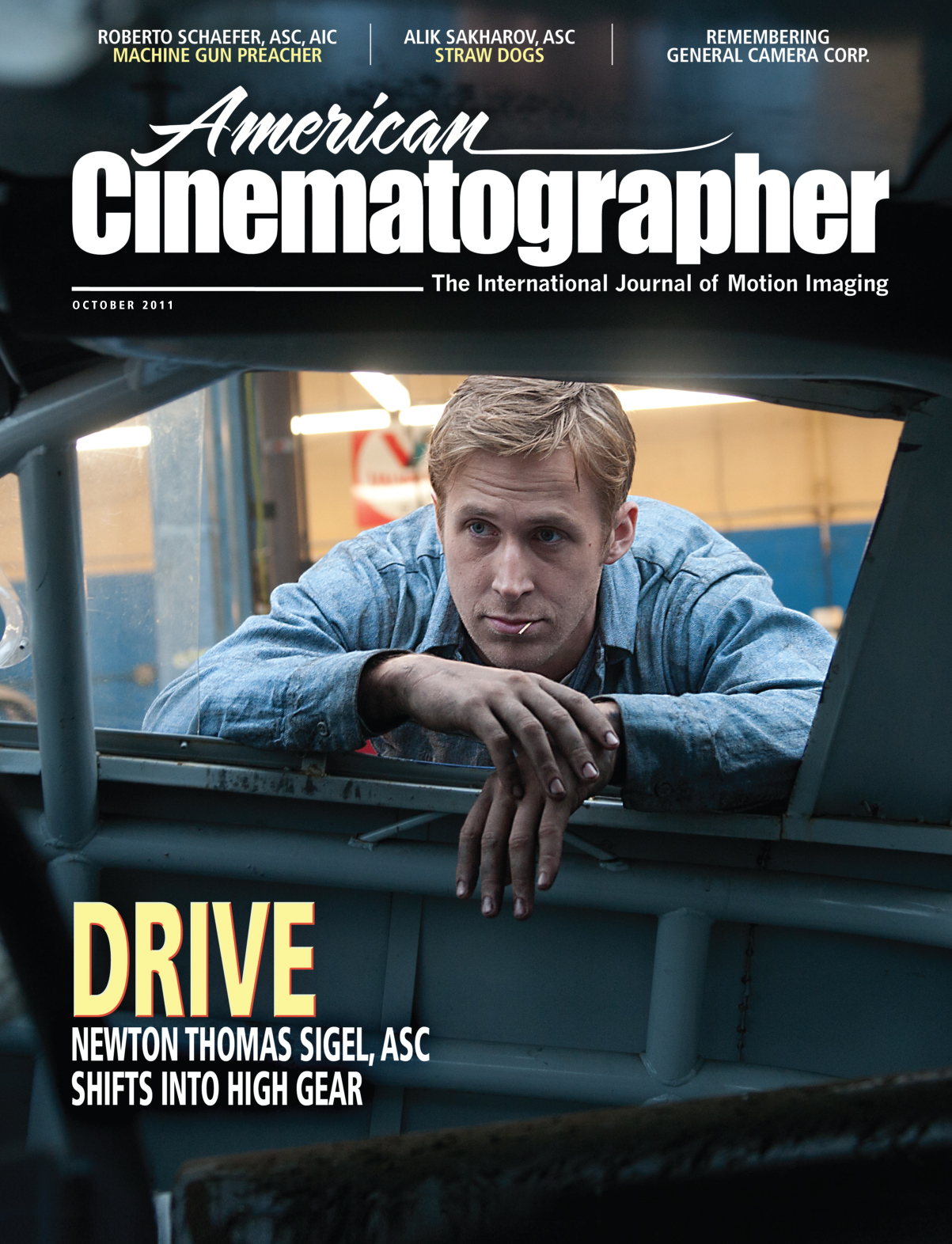
Drive marks Sigel’s first collaboration with Refn, and the cinematographer recalls that when he was approached about the project, “I took a look at Bronson and was really impressed. It was clearly a film with a limited budget and limited resources, but it had a very strong vision from the director.”
“I met with a lot of wonderful cinematographers — that’s the good thing about Hollywood, they’re all out here,” says Refn. “But when I met Tom, I really dug his energy, and his background as a documentary filmmaker made me confident we could make our seven-week shooting schedule work. Plus, his first film as a cameraman was Kenneth Anger’s Lucifer Rising!”

Refn often cites avant-garde filmmaker Anger as an influence. “The first visual reference I showed Ryan in regards to Drive was [Anger’s] Scorpio Rising,” he says. “Ryan asked,‘Why are you showing me a movie with a lot of guys working on motorcycles?’ And I said, ‘It’s how it’s shot — the sensual, sexual nature of it, the fetish, the objectification. That’s what we should try to go for.’”
In addition to Anger’s oeuvre, Refn and Sigel were inspired by the look of location-scout photos Sigel snapped using the Hipstamatic app on his iPhone. “There are some color palettes in that program that reference retro photographic looks, like Kodachrome or Ektrachrome,” says Sigel. “I showed Nicolas some of the photos, and he wasn’t certain of the strange tonalities, but he really responded to the vibrancy of the colors. We designed a lot of sets and costumes to make use of that kind of vibrant palette.”
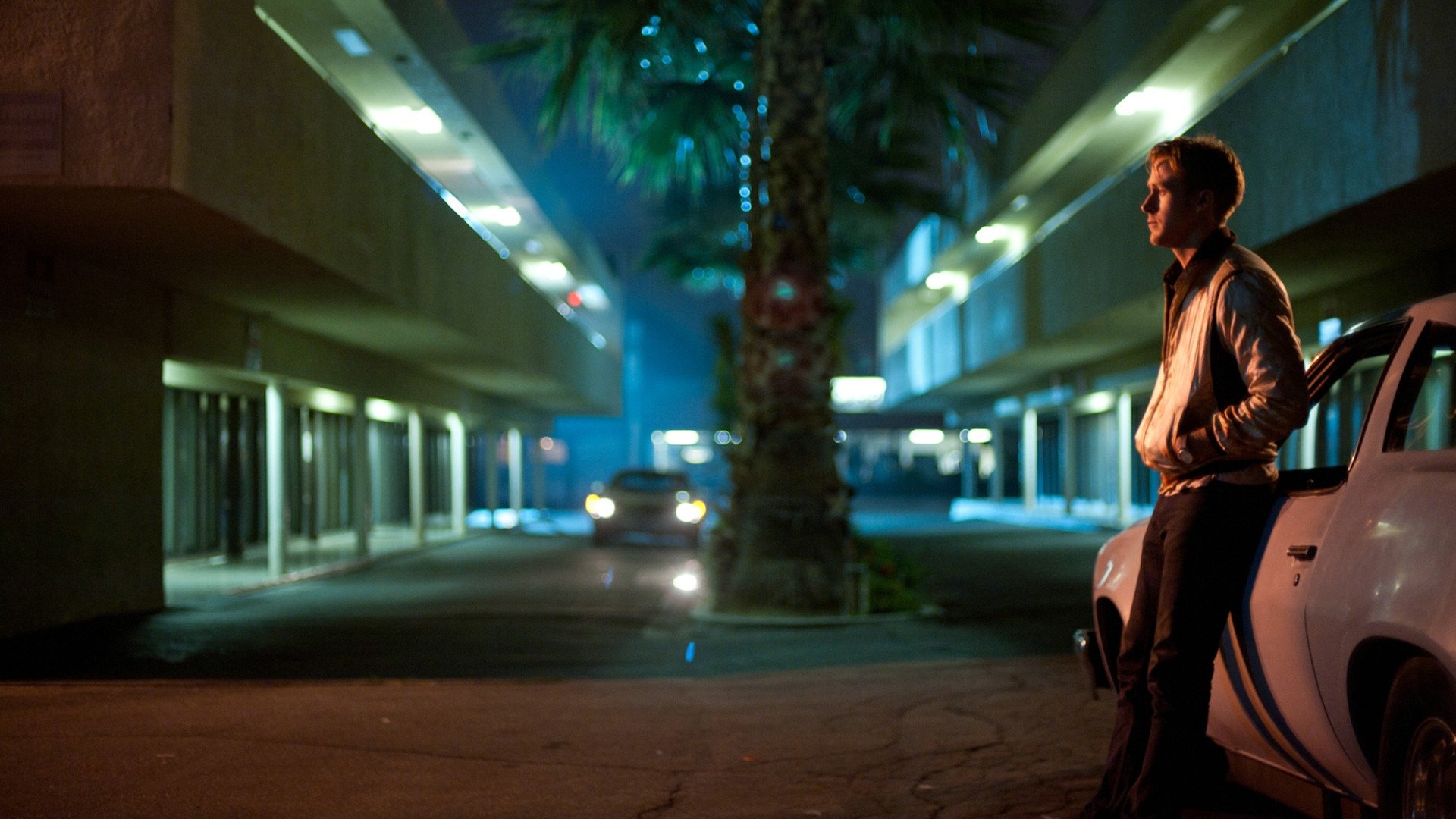
Early in his month-long prep, Sigel decided to shoot with Arri’s Alexa digital camera. “We had a tight budget and very little time, and I was intrigued by the look I could get shooting available light downtown,” he explains. “I did some driving tests with the Alexa, and it blew me away in terms of what it could do with existing light.
“I rated the camera at 800 [ASA],” he continues. “I think the myth of digital is that you underexpose because it can’t hold the highlights like film. I find that when you underexpose digital more than a little bit, very often you increase your noise level significantly. What’s extraordinary about the Alexa is that even if I pushed the sensor to 1,600 [ASA] there was very little noise, and I could actually underexpose quite a bit without introducing noise in the blacks. The dynamic range was mind-boggling.”
The cinematographer adds that he typically shot nights and interiors around T2.8, and day exteriors around T8.
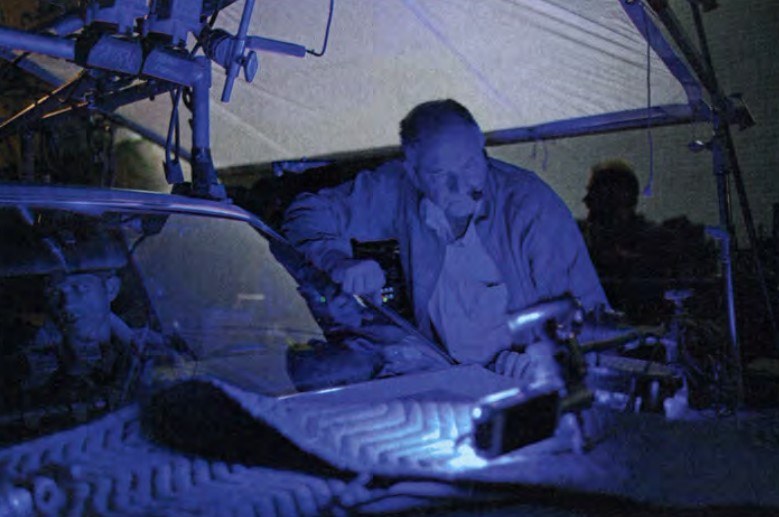
Clairmont Camera in North Hollywood provided the camera package. Sigel shot most of the picture using the l5-40mm Angenieux Optimo zoom lens. “I also used Cooke S4 primes for the daytime car interiors, and Zeiss Master Primes for the nighttime car interiors.”
He kept filtration to a minimum, although he occasionally employed a Tiffen Soft/FX filter (in either V2 or 1 density) for diffusion.
“Nicolas really loves wide lenses, like the 18mm and 21mm,” says Sigel. “That’s a challenge when you’re trying to get a lot of work done in a short period of time. You tend to want to set up multiple cameras and have the telephoto lens pick off close-ups while you’re getting a two-shot, but we limited that approach as much as we could.
“Whenever there was a fight or an act of violence, we’d get two cameras on it so we didn’t have to repeat that action over and over,” adds the cinematographer.
Sigel operated the A camera, and Greg Lundsgaard served as B-camera/Steadicam operator. “I’d worked with Greg before,” says Sigel. “He’s got a good eye, and I’m very confident in what he does.”
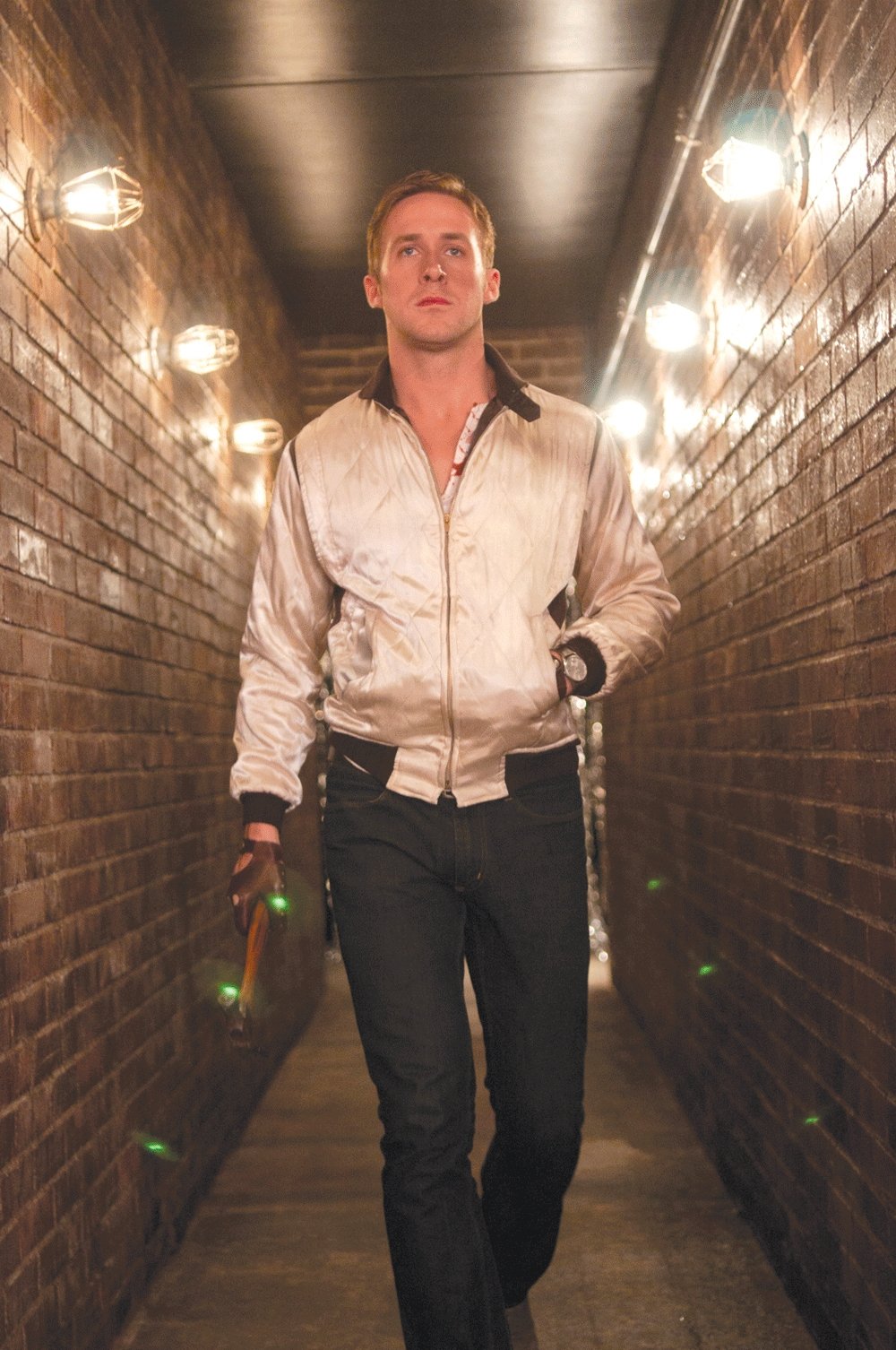
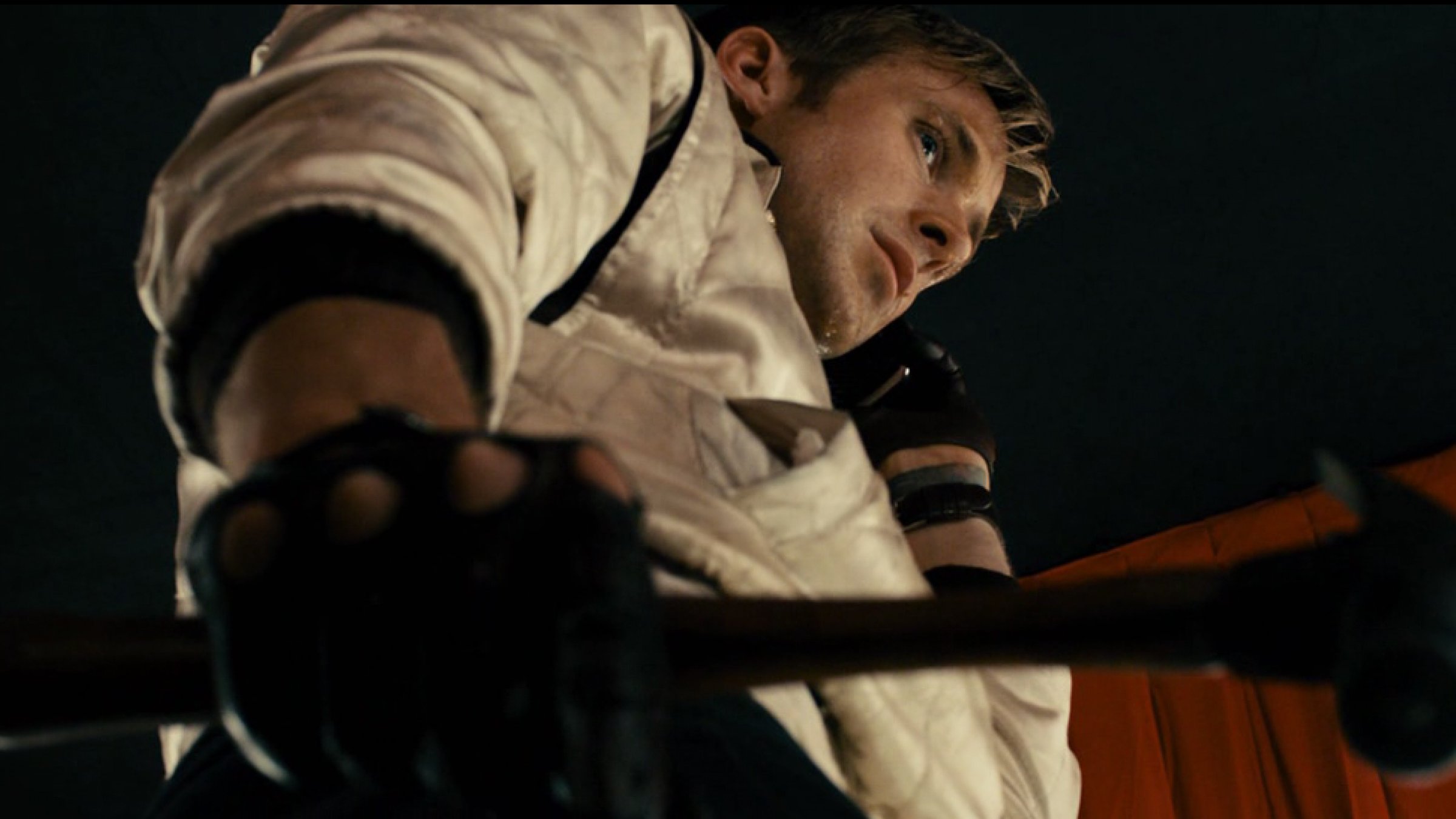
By the time Sigel joined the production, it was a given that the entire shoot would happen in and around L.A. The Park Plaza Hotel became one of the production’s hubs. The location provided ample space to build the strip club’s dressing room, the design of which grew out of Sigel’s pre-production discussions with Refn and production designer Beth Mickle. Sigel recalls, “I mentioned that on Frankie & Alice, we created a dressing room that had tables at different angles, so when we shot we got layers and layers of detail in the mirrors. Nicolas took that idea one step further and said, ‘Let’s make it all mirrors.’ So we basically made a mirror box — it reminded me of a Lucas Samaras sculpture — and it was just lit with practical light.
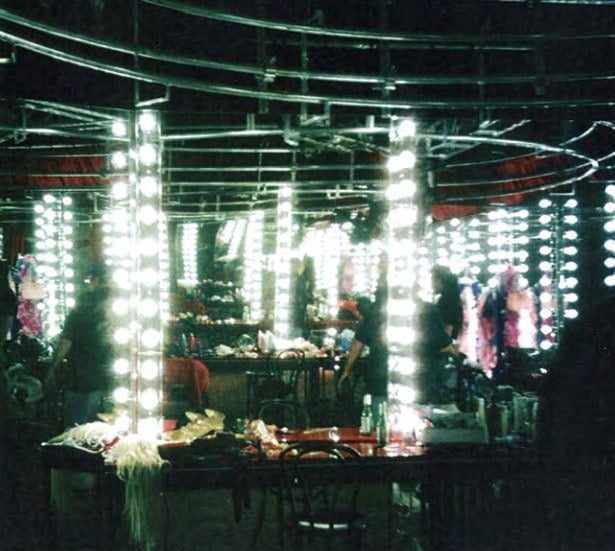
“We had one shot where we had to do a 360-degree camera move,” Sigel continues. To avoid seeing the camera’s reflection in the mirrors, “key grip Alex Klabukov created a rig from the ceiling that was almost like a helicopter blade — the camera sat on it and spun around above the actors, just barely out of shot.”
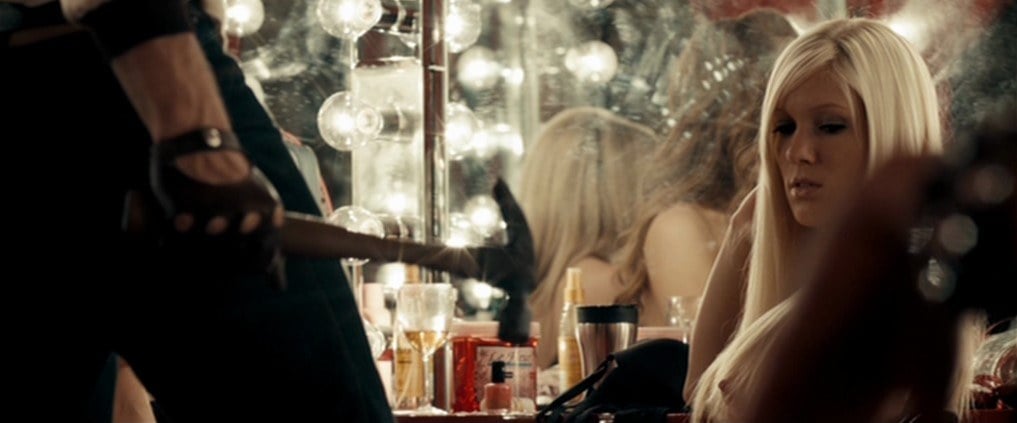
As the crew prepares to shoot in the dressing room, Refn places the extras playing the strippers and gives them directions. In the scene, Driver enters the dressing room and takes a hammer to the hand of Cook (James Biberi), the club’s proprietor, and then throws him to the ground, demanding information about the heist that went bad. As the violence erupts, some of the strippers make a speedy exit, while others stay seated around the perimeter, waiting for the outburst to subside.
For much of the scene, Sigel and Lundsgaard sit tucked in a corner of the set, rolling two cameras. Lundsgaard keeps his camera trained on Cook, Sigel follows Driver, and as the actors move through the frame, the bare bulbs positioned around the mirrored walls occasionally flare the lenses. “The globes were 40 or 60 watts, and they had a sort of mauve color,” says gaffer Anthony “Nako” Nakonechnyj, one of Sigel’s longtime collaborators. “We would turn off globes we didn’t see to increase the contrast, and we could dim them down if they were too bright or were flaring the lens.”
The Park Plaza also housed Driver’s and Irene’s apartments, which were designed to function like practical locations. A common corridor was constructed, and doors along the corridor opened into the actual apartment sets. Additionally, the set’s windows lined up with the Park Plaza’s real windows, providing a view of downtown L.A.
Sigel recalls that the floor used for the apartments was “way up, beyond where you can reach with Condors for exterior lighting. The challenge was balancing the light inside in a quick and efficient way, and that’s where the Alexa was great. We had a lot of plans about how to gel the windows, but once we got in there, I didn’t need to use all of those tricks because the camera had more dynamic range than I expected.”
To supplement the practicals inside the apartments, the crew regularly employed Kino Flo 4' two-bank fixtures fitted with K32 3,200°K tubes, as well as several varieties of small, homemade instruments that housed dimmable Photofloods. The common corridor was lit primarily with 250- watt Photofloods fitted inside sconces and “dimmed down as needed,” says Nako. Sigel adds, “We always go through a dimmer system. It’s faster and gives you more control.”
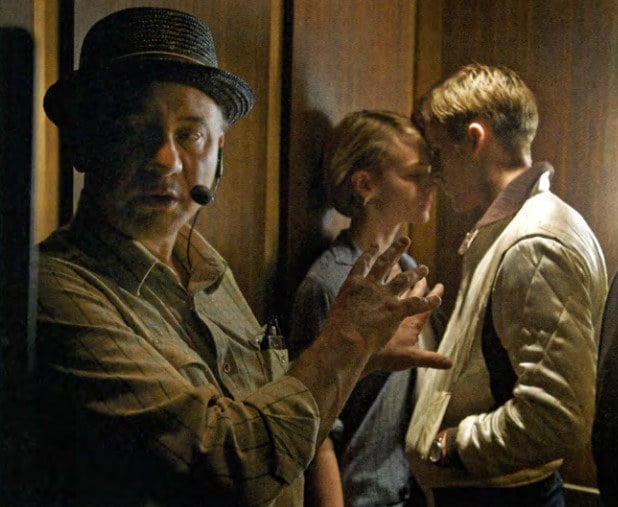
At one end of the corridor, the crew also constructed an elevator set. To sell the impression that the elevator was moving from one floor to another, the art department would redress the hallway just outside the elevator to appear as different floors. For shots in which the doors open to reveal the parking garage, the crew actually rebuilt the elevator set in a garage at Los Angeles Center Studios. There, Nako explains, “we changed out all the globes and replaced them with 4-foot Kino Flo 3200s. We also added kicks and sheens with some lOKs, and we did some raking with Mole Baby 2Ks with Small Quartz Plus Chimeras; the Chimeras usually wore a Quarter Grid Front and a 40-degree Lighttools LCD [lightcontrol device].”

Irene find
themselves in
an elevator
with a hit man
(Christian
Gage) sent to
kill them.
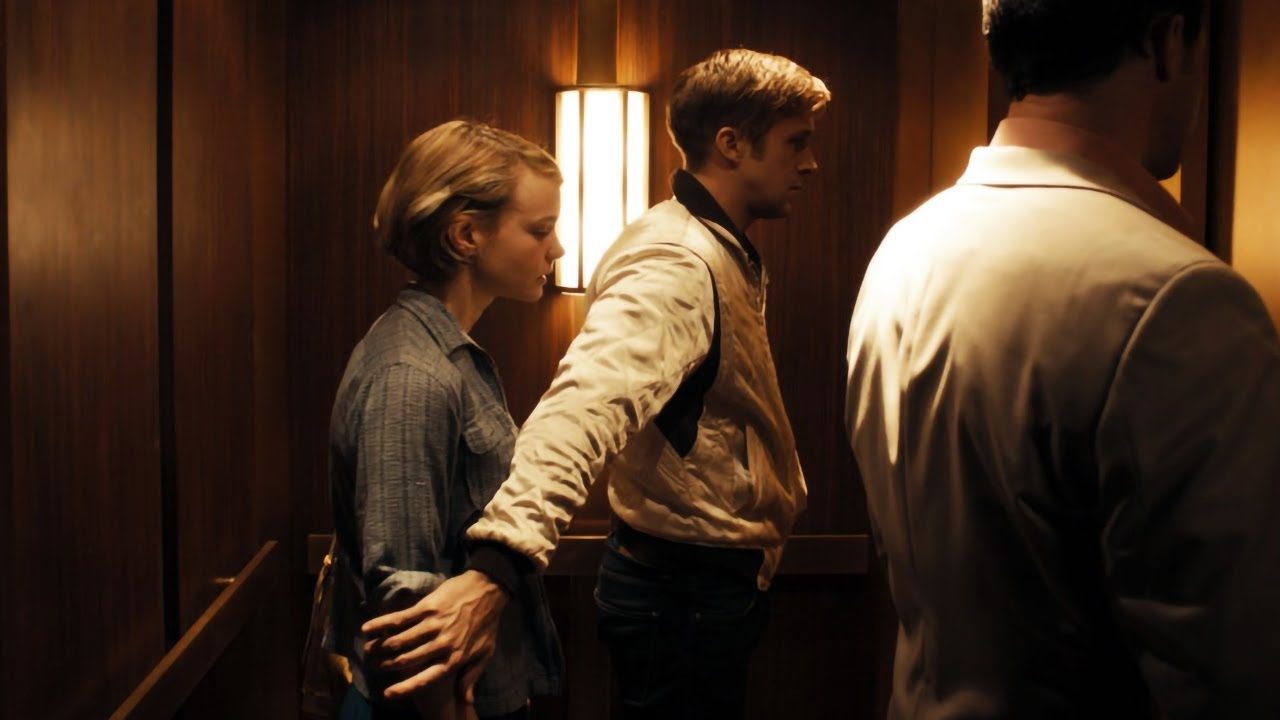
The elevator is the setting for a crucial scene in which Driver and Irene find themselves sharing a ride with a hit man (Christian Cage) who’s been sent to kill them. Glimpsing the killer’s holstered gun, Driver gently pushes Irene toward the back corner; the lights dim, and, in slow motion, Driver turns and kisses Irene. Nako explains, “The units in the elevator were recessed can lights with 75-watt JDR Spot Globes. We also added what I call a ‘Mini Space Light,’ a variation on the covered wagon. All the lights in the elevator were controlled by a dimmer board.”
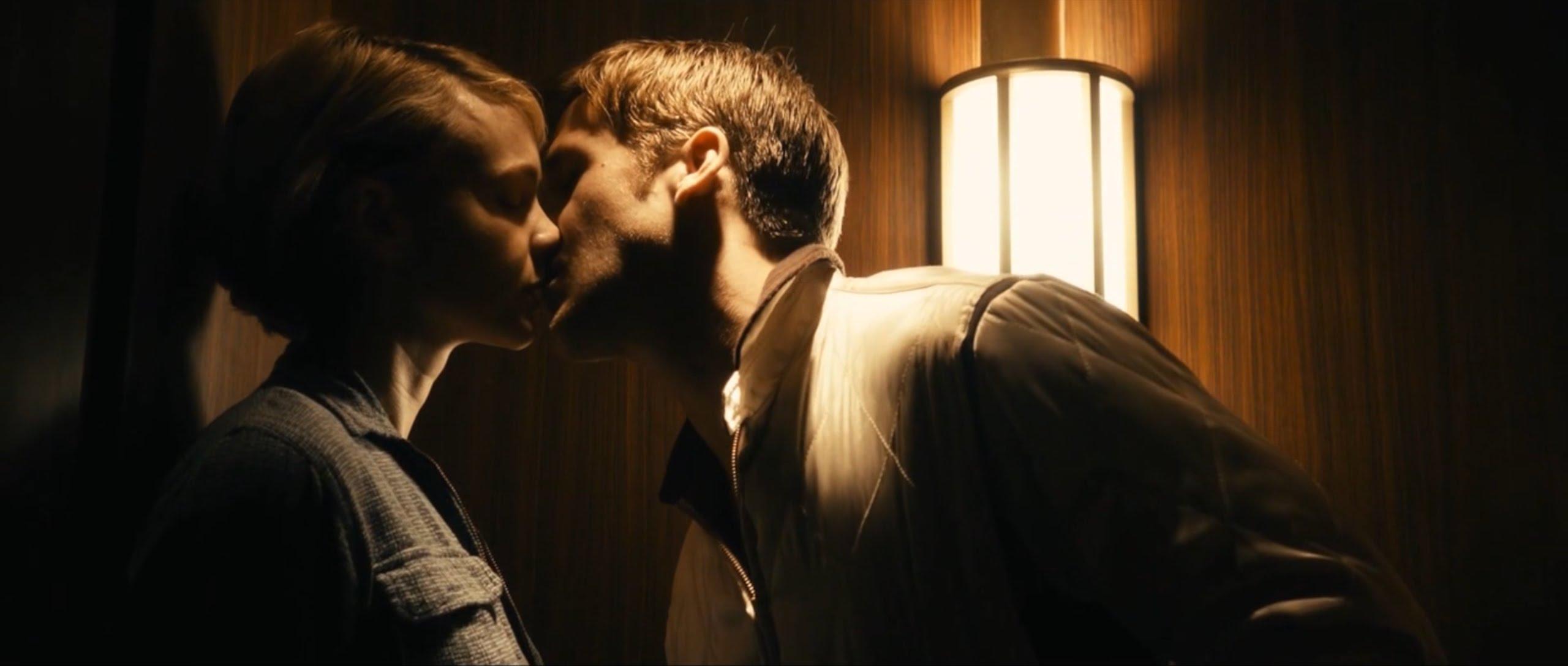
The lights come back up to their normal level, and then, with the camera again rolling at 24 fps, Driver spins and smashes the man’s face into the elevator’s controls. A brief struggle ensues, ending when Driver literally kicks in the man’s face. “It’s the ultimate irony, going into this act of violence from his one good moment of love,” Sigel muses. “When Irene walks out of the elevator and looks back at Driver, this wild animal, you realize it’s over between them.”
“There’s a scene in every one of my films that is the heart of the movie, and in Drive it’s the elevator scene,” says Refn. “It was a way to tip the viewer to Driver’s essential dilemma. You don’t know if it’s his fantasy or his reality, and he doesn’t quite know himself.”
The head smash “was very much inspired by Gaspar Noe’s Irreversible [AC April ’03],” adds Refn. “Gaspar talked me through how he did it.”
For Drive, visual-effects supervisor Jerry Spivack oversaw the digital compositing of the actor’s body with a prosthetic head. Similar work was also done for an earlier scene in which Driver and Blanche (Christina Hendricks), an accomplice in the ill-fated heist, hole up in a tiny motel room. When armed thugs break into the room, one shoots Blanche in the head. Sigel explains that the special effects department “built a prosthetic head and blew it up, and we photographed it at high speed [using a Weisscam HS-2 recording at 250 fps].

demands
information from
Blanche (Christina
Hendricks) after a
heist goes awry. In
the background,
Refn and Sigel
discuss the frame
while 1st AC Nino
Neuboeck stands
at the ready.
We also photographed Christina at high speed, and then the visual-effects team combined the heads to create the effect of her head being blown off.
“Trying to light someone in a practical bathroom not big enough to fit two people was a challenge,” Sigel continues. “Fortunately, there was a window we could light from, but we needed to add 2V2 more stops to accommodate the high speed. To make matters worse, there was a tree right outside the window. Nonetheless, the judicious use of an 18K Arrimax did the trick.
“Nicolas wanted the moments of violence to be incredibly visceral,” the cinematographer continues. “He wanted to go for the gore. The bulk of the film is not violent, but when it does turn to violence, it really is horrific.”
Refn says his approach to the film’s violence was in keeping with the fairytale elements he saw in the story, with Gosling playing “the knight, and Carey as the innocent girl whose purity needs to be protected. When violence comes in a fairytale, it’s always very brutal, in very short sentences, and characters die very violently.”

“Nicolas talks metaphorically about character,” notes Sigel. “Even when he was describing the tone of the car sequences, it was as if the car was an extension of Driver, like he was part man, part machine.”
Finding the character within the driving sequences was crucial for Refn, who doesn’t have a driver’s license. “I have no interest in driving and no interest in cars,” says the director. “But this is a movie about a man who happens to drive a car, not a movie about cars.”
Sigel says Refn “wanted the film’s three main driving sequences to each have its own character and not be a traditional car chase. It wasn’t so much about being loud and noisy as it was about having a defined tonality.”
Those three sequences were all shot during the final two weeks of production. In the first sequence, Driver navigates a silver Chevy Impala through downtown L.A. at night, evading the police and delivering two thieves to the parking lot of the Staples Center, where they and Driver disappear into the crowd.
“That first chase is meant to be very subjective,” says Sigel. “For the bulk of it, [we] don’t even leave the car — the whole sequence is from Driver’s point of view.” To position cameras in and around the car, Klabukov and his crew rigged high hats inside and speed-rail rigs along the outside.
“As part of my test, I took Ryan out in a car, and Tony and I rigged the car with a rack overhead with all different kinds of tiny lights, such as LEDs and 150-watt [Arri Fresnels],” says Sigel. “We wired them all into dimmers in the trunk that could be wirelessly controlled, so we could turn lights off and on or dim them up and down. The lights were all so small and unobtrusive that they were never in shot, so Ryan could just drive around while Tony played the roof rack like a musical instrument. There were also times when we’d kill all of our lights — we’d pull up to a stoplight, and you could see the light on Ryan’s face go from red to green.”
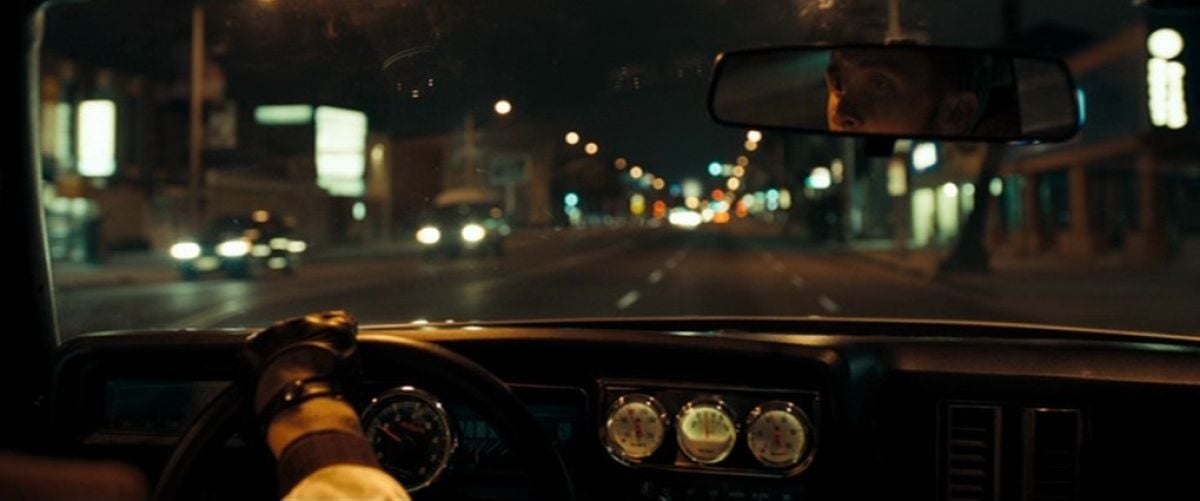
For the shoot, the filmmakers refined the system they had utilized for the test and continued to light primarily from the roof-mounted speed-rail rig, which sat like a halo atop the car. Off of the rig, the crew positioned Arri 150-watt tungsten units, some gelled with Rosco Urban Color #3152 or Lee Fluorescent 5,700K #241, to supplement the output of sodium-vapor and mercury-vapor practicals. Nako also employed what he calls “D-Lights. Josh Stern, my best boy, and I designed these housings that look like an iPhone and [fitted them with] LiteRibbon LEDs from LiteGear.” Some of the D-Lights contained hybrid LiteRibbons, which allowed Nako to switch between tungsten and daylight color temperatures, and others contained RGB strips, which allowed for a wider array of colors.
Nako and his crew also placed D-Lights inside the car, along with what the gaffer calls “LED Sticks,” strips of Hybrid or RGB LiteRibbon fitted inside 3", 6" or 12" lengths of aluminum channel. “We used the 12" on the windshield [to supplement] the red-light/green-light effect, and we used a 3" LED Stick in the instrument panel area to provide some glow,” says Nako.
To power all the lights in and around the car, the crew placed a 12-volt 150AH MF Truck battery in the Impala’s trunk. “They put a bigger alternator in the motor, so the battery was being charged by the engine of the car as we drove,” explains Nako. “The battery pushed 32 channels on 12-volt. Each D-Light was either two or three channels — the RGB had three channels and the hybrids had two channels. I also had two 6-by-1.2K Lightronics dimmer packs on top of the car for the Axri 150s, and the whole system was being controlled by wireless DMX, so we could chase the car with the follow van, where I had the ETC Smart Fade ML dimmer board.”
The second car chase takes place during the day and begins with the heist gone wrong, which leaves Standard dead at the scene. As Driver and Blanche speed away in a black Ford Mustang, a Chrysler 300 sedan with tinted windows begins its pursuit. “I loved the idea of this strange extra car,” says Refn. “My reference was when Cary Grant runs in the crop field in North by Northwest. The plane comes, and you don’t really know why it’s there; it’s a dreamlike situation.” The director was equally inspired by Claude Lelouch’s short film Rendezvous, in which a car tears through the streets of Paris while the revving engine fills the soundtrack. Refn recalls, “I said, ‘What if I did a chase that’s all about the sound of the cars?”
In terms of coverage, says Sigel, “the second car chase is meant to be the most traditional. The twist at the end is that Driver’s ability to overcome the car that’s chasing him is done by a bit of trickery: spinning his car around and driving backwards. It’s almost like a tongue-in-cheek play on the climactic moment of a traditional car chase.”
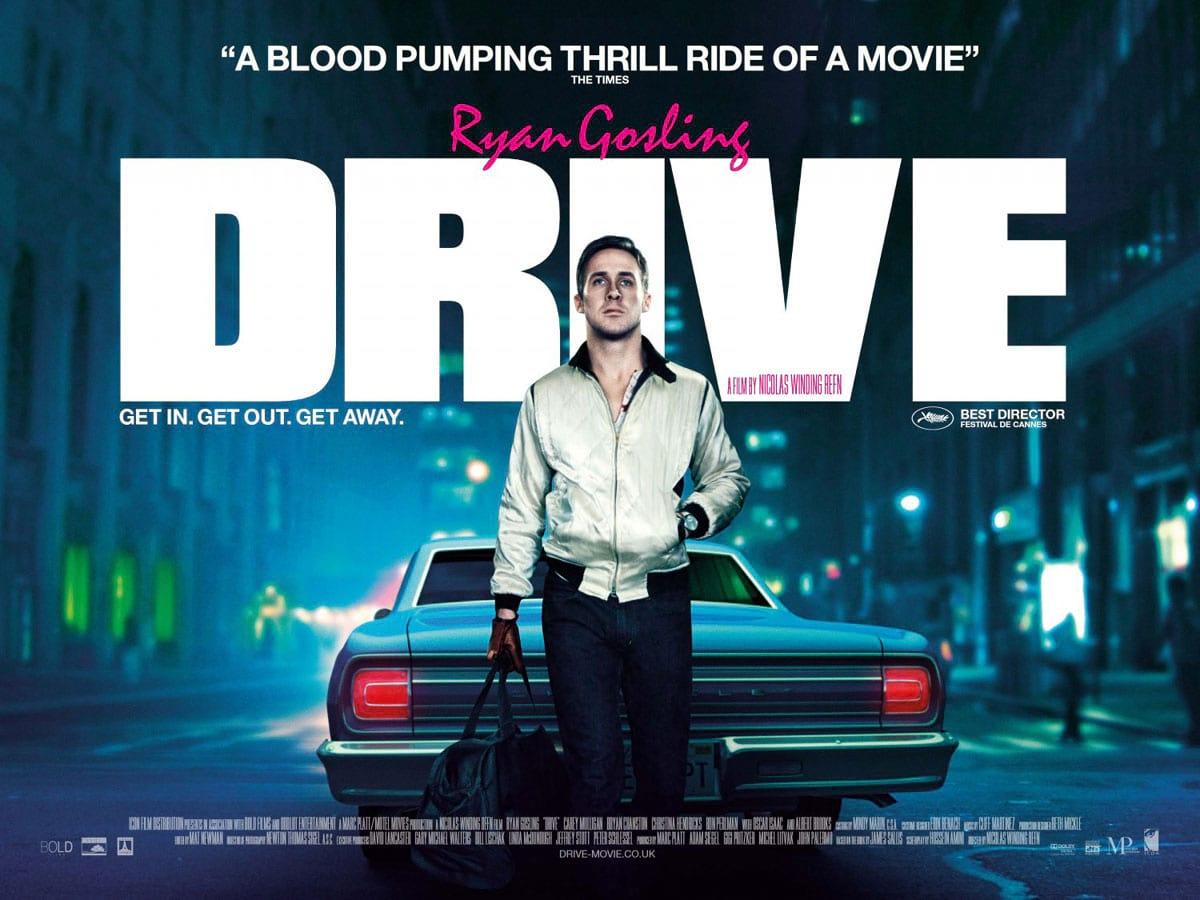
The sequence was shot over two days around the Templin Highway exit off Interstate 5. AC visited the location on the second day and found the crew busy prepping the climax of the chase, when Driver puts his Mustang through a 270-degree spin to separate himself from the Chrysler, which then caroms off a guardrail. The Chrysler’s crash is seen through the rear windshield of the Mustang as Hendricks “freaks out in the foreground,” says Sigel; the shot was captured with an Alexa locked down where the front passenger seat would normally be, next to the precision driver who took the wheel for the stunt.
Despite the heat, Refn was again wearing a blanket around his waist as he oversaw the proceedings on location. In addition to the Alexa in the Mustang, the crew was prepping a number of other cameras to ensure the crash would not require more than one take; the other cameras included an Alexa on a remote head positioned along the side of the road, another on a Mercedes SUV-mounted Ultimate Arm, and an Iconix HD-RH1 on the Mustang’s dashboard.
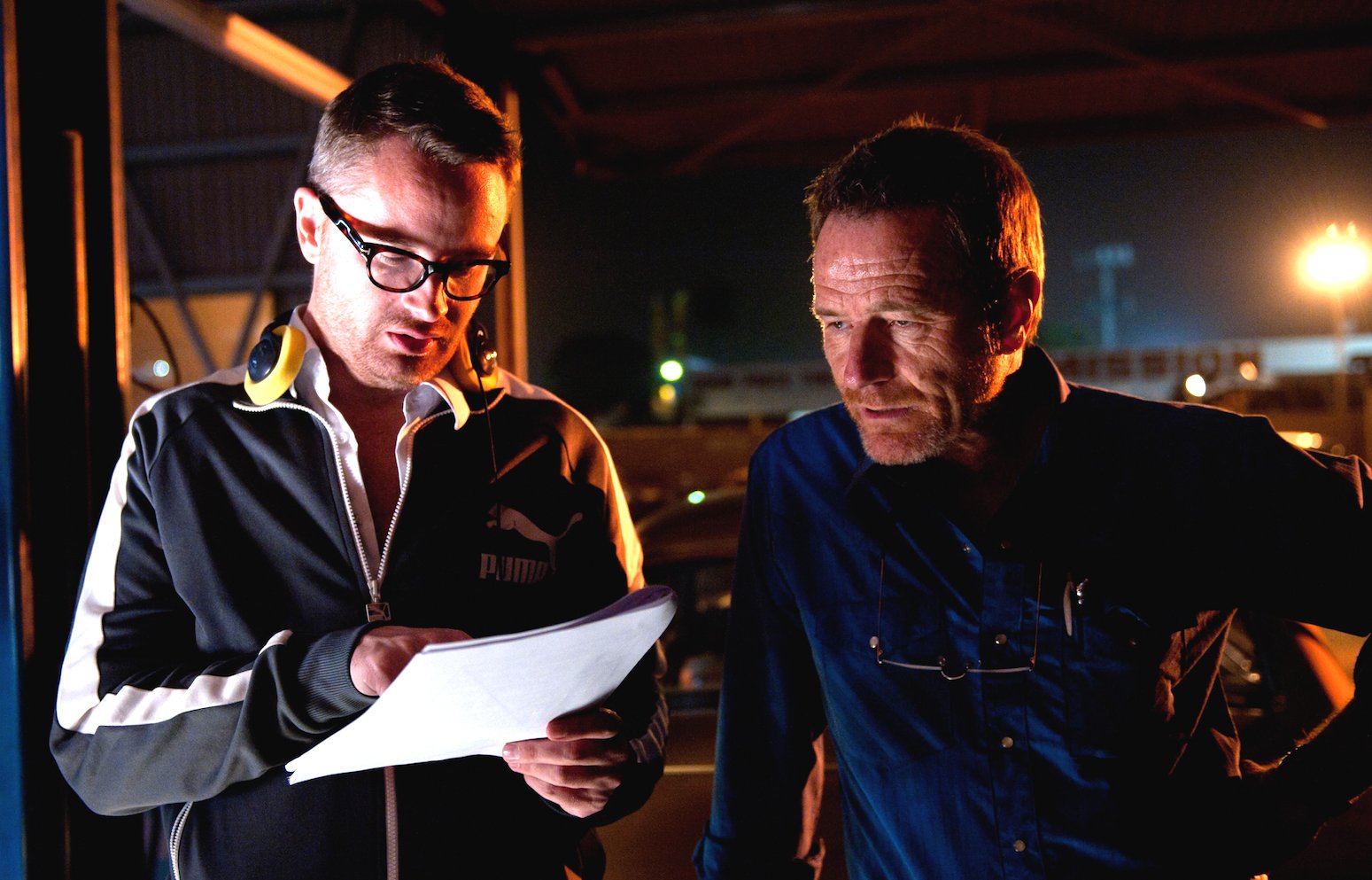
Sigel notes that he also “set up my [Canon EOS] 5D in a fixed-camera position to get more coverage. Every time I pulled out my 5D, it ended up being used, just because you can put that camera where you wouldn’t dare put an Alexa.” However, the cinematographer adds, “in prep, focus puller Nino Neuboeck and I tested the 5D, 7D and Iconix cameras, thinking they would come in handy for the car work, but the quality of the Alexa outdistanced the other cameras by so far, we kept them to an absolute minimum.”
Sigel describes Drive's third and final chase sequence as “the most predatory.” Having traced his problems since the heist back to crime boss Bernie Rose (Albert Brooks) and his associate, Nino (Ron Perlman), Driver hunts Nino at night and runs the gangster’s car of fthe road. Driver then drives straight into the side of Nino’s car with enough force to send it toppling over a cliff.
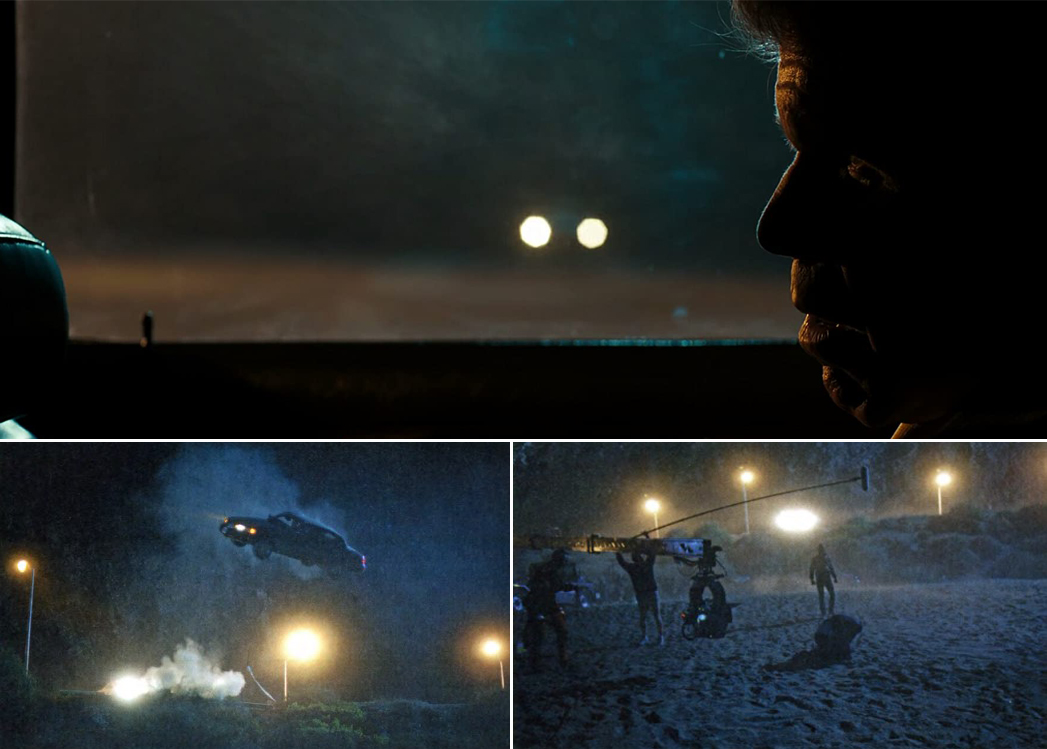
chase sequence, which culminates in a crash that sends Nino's car hurtling onto the
beach. The sequence was filmed at Malibu's Point Mugu, where the production set up
the sodium-vapor streetlamps shown here.
The sequence was filmed at Malibu’s Point Mugu, where the production occupied a parking lot that overlooked the stretch of beach where Nino’s car lands. To backlight the crash, Sigel and Nako employed a 16-head and a 9-head Bebee Night Light, and for fill they utilized 4' tungsten spheres rented from Skylight Lighting Balloons. Additionally, the crew brought in “cobra head” sodium-vapor streetlamps, which play in frame behind Driver as he walks onto the beach and chases Nino into the crashing surf. The streetlamps’ warm backlight was further supplemented by “what I call Light Grenades, bare sodium-vapor globes that we could easily move around and flag off, depending on what effect was needed,” says Nako.
“Another big effect we had on the beach was a searchlight, which was actually a 7K Xenon bounced into a spinning 4-by-4 mirror,” the gaffer continues. “Then, when the camera looks at the ocean, we turned the 16-head Bebee toward the water and lit the atmosphere above it, so we could actually see the ocean.”
Throughout the shoot, the filmmakers recorded out from the Alexa to HDCam-SR tape. The camera was also monitored through a FilmLight Trulight On-Set system, which was overseen by digital-imaging technician Ryan Nguyen. Sigel explains that the Trulight system allowed the filmmakers to do “real-time color correction on the set. We didn’t do anything radical, but we’d add some contrast and a little bit of saturation. All of the [metadata] would be recorded on a flash drive that would go to FotoKem, where [colorist/ASC associate member] Mark Van Horne, whom I’ve known for many years, was kind enough to sit in during the transfer. Mark knew the look I was going for, and if he saw something going in the wrong direction, he’d make some corrections and give me a call. It was a very simple and easy system.
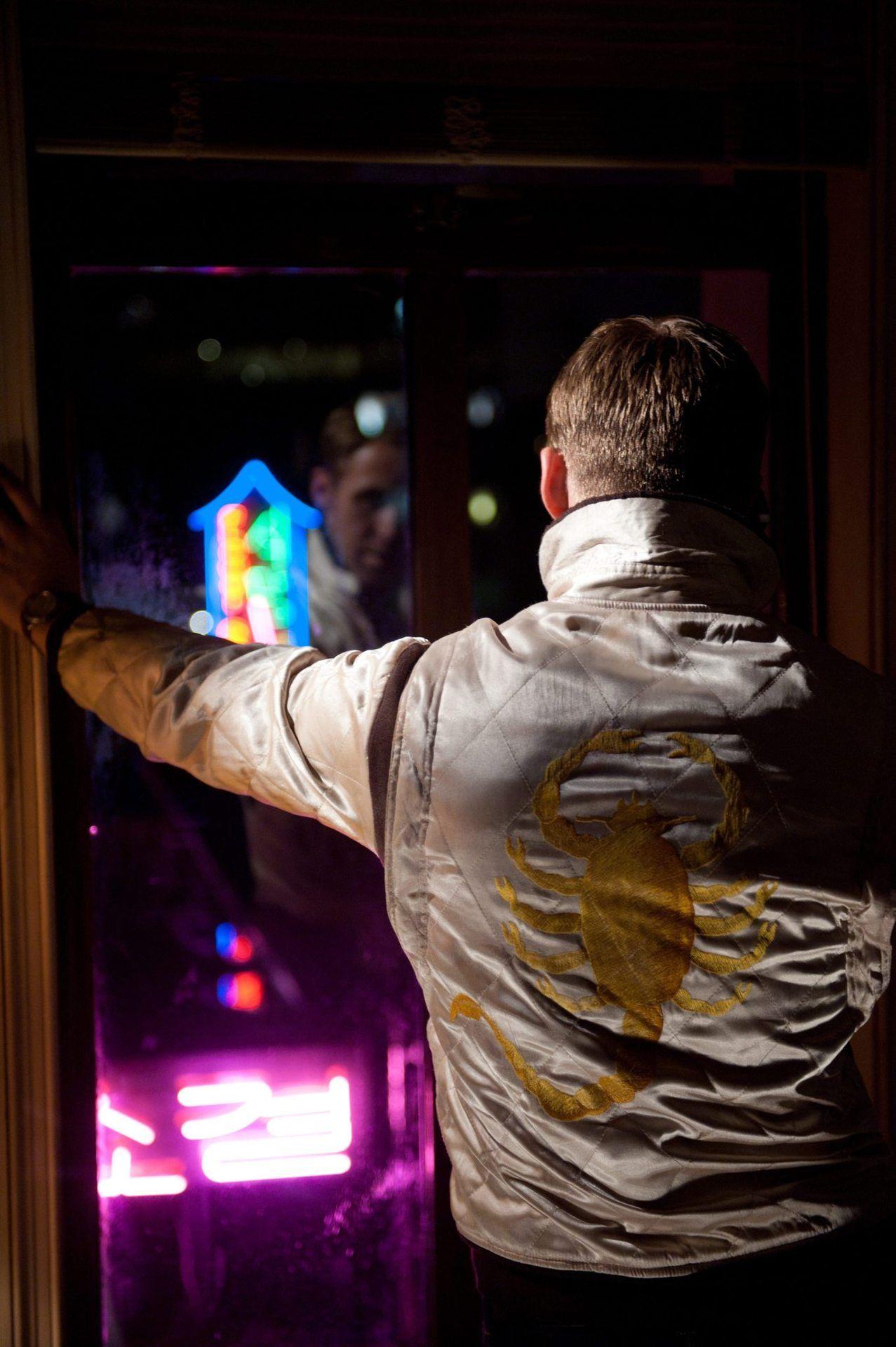
“Because of all the work we did with the Trulight, the DI was pretty simple,” continues Sigel. The final digital grade was carried out at Company 3’s New York facility with colorist Tom Poole; Sigel also did some preliminary work with colorist Stephen Nakamura.
Drive had its premiere at the Cannes Film Festival, where Refn received the award for Best Director. In a conversation with the director a few months later, AC at last asked the pressing question: What’s the deal with that blanket he wears on set?
“It’s a ritual I’ve had since my first movie,” says Refn. “On all my films, I find a blanket in the costume department, and I wrap it around my stomach to keep the energy within me. I only take it off if I’m very, very angry or very, very hot. It keeps my stomach warm, which centers me and gives me peace. Filmmaking is a stressful experience.”
2.40:1
Digital Capture
Arri Alexa, Weisscam HS-2 MK2, Canon EOS 5D Mark II, Iconix HD-RH1
Angenieux Optimo, Cooke S4, Arri/Zeiss Master Prime
“Pretty in Pink With A Head Smash”
By Nicolas Winding Refn
I’d come down with the flu and had taken some anti-flu drugs before meeting with Ryan Gosling about Drive, and I was high as a kite through dinner. Halfway through the meal, I asked if he could take me home, because I needed to lie down. It was like a blind date gone bad. In the car, Ryan turned on the radio, and REO Speedwagon’s “Can’t Fight This Feeling” started to play. I was so out of it I started crying, turned the radio up and began singing. Then I turned to Ryan and screamed, “I know what Drive is! It’s about a man who drives around at night listening to pop music because that’s his emotional release!”
Ryan said, “Okay,” and that’s how the film was born.
“While talking with Tom Sigel [ASC], it quickly became clear that we had similar tastes and understandings.”
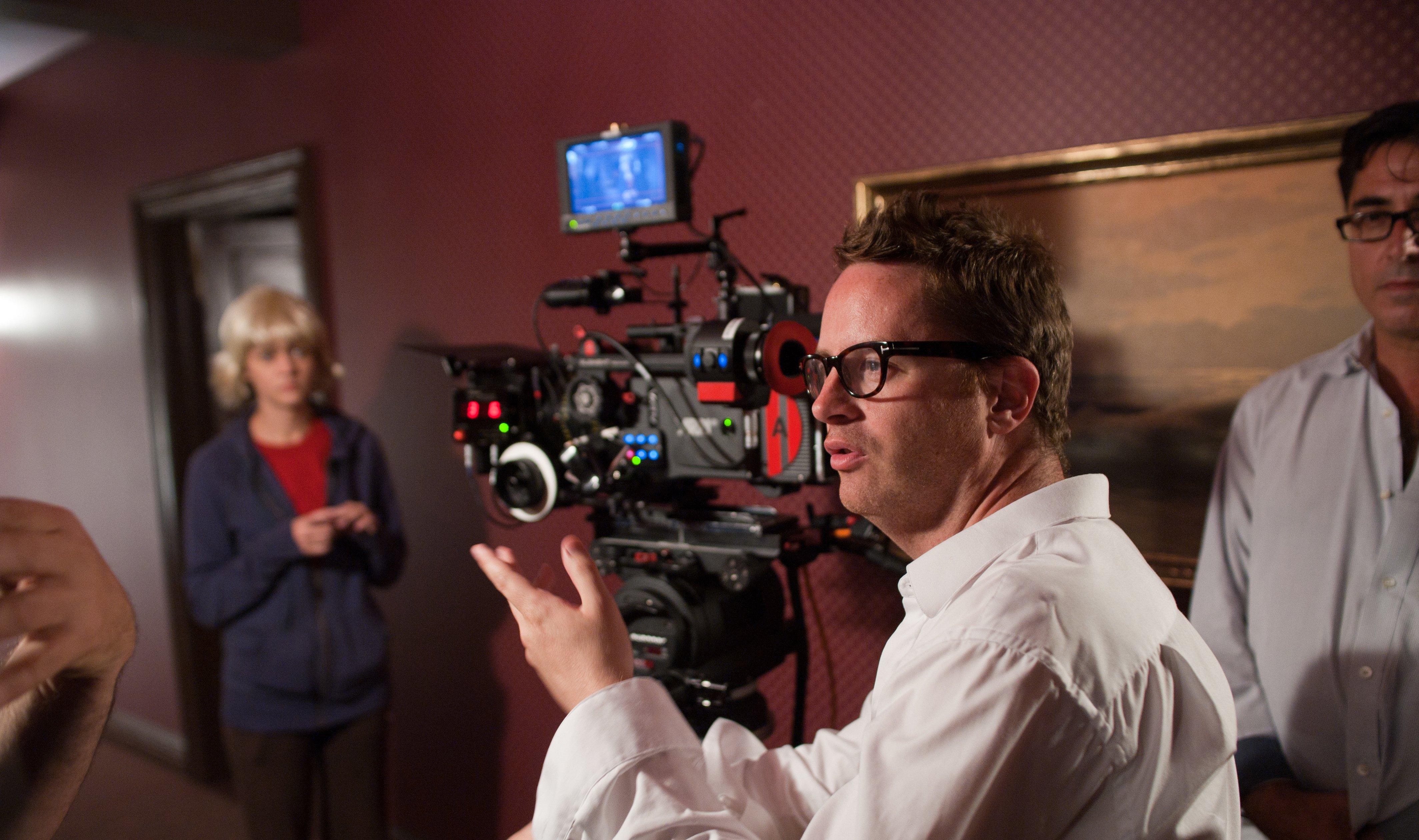
I loved James Sallis’ book. It’s an existential story about a stuntman who’s also a getaway driver. He lives in Hollywood, he can’t quite deal with reality, and he goes a bit psychotic at the end. Driver is two people: by day he works in Hollywood, and at night he drives in an almost armored suit. I wanted him to be like a superhero in the making.
I wanted to make Drive an L.A. fairytale, which is what Sallis’ book is. To make the violence feel extreme, I had to make the first half of the movie very pure and sentimental, almost like a John Hughes movie. Then it goes really violent. It’s like Pretty in Pink with a head smash.
I spent a lot of time redesigning the script with Hoss Amini, who adapted the book, and Ryan. We had the whole movie on index cards, and we’d move things around on the living room table. Then, at night, Ryan drove me around and showed me Los Angeles. We were almost living the movie as we were writing it.
I felt I would benefit from working with a Hollywood cinematographer. While talking with Tom Sigel [ASC], it quickly became clear that we had similar tastes and understandings. I explained to him that I don’t do a lot of coverage, and I like wide-angle lenses because I want depth. I wanted to go with a classical style, which I felt would give the film its own identity. Also, I’m colorblind, so I told Tom and Beth Mickle, the production designers, “I need contrasting colors, and I like a lot of red.” It was a wonderful collaboration.
There are so many movies where you see cars spin and fly. With our budget, we couldn’t even get close to that kind of action, so I wanted to see if I could define each driving scene specifically. I did something similar on Bronson, in which each of the three fight scenes had a different feel. I don’t have a driver’s license, but I’ve always been fascinated by speed, and I also have a fetish for curves, so I wanted to shoot the cars how I would see them sexually. I’m very much a fetish filmmaker; I make films out of what I would like to see.
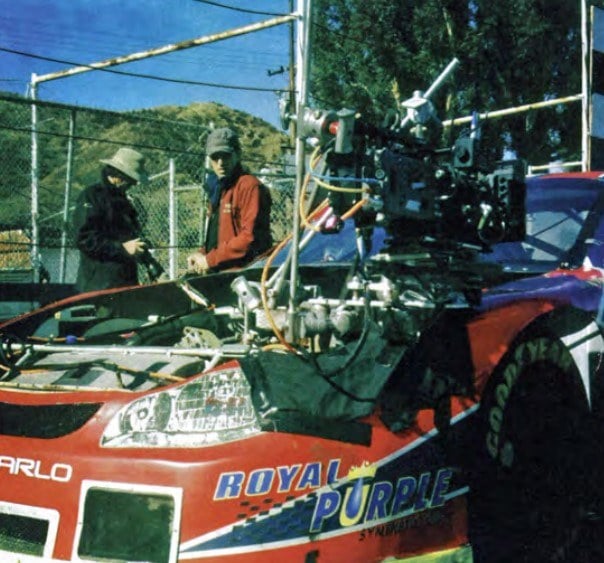
took this photo using the Hipstamatic app, and he notes that Refn "responded to the vibrancy of the colors."
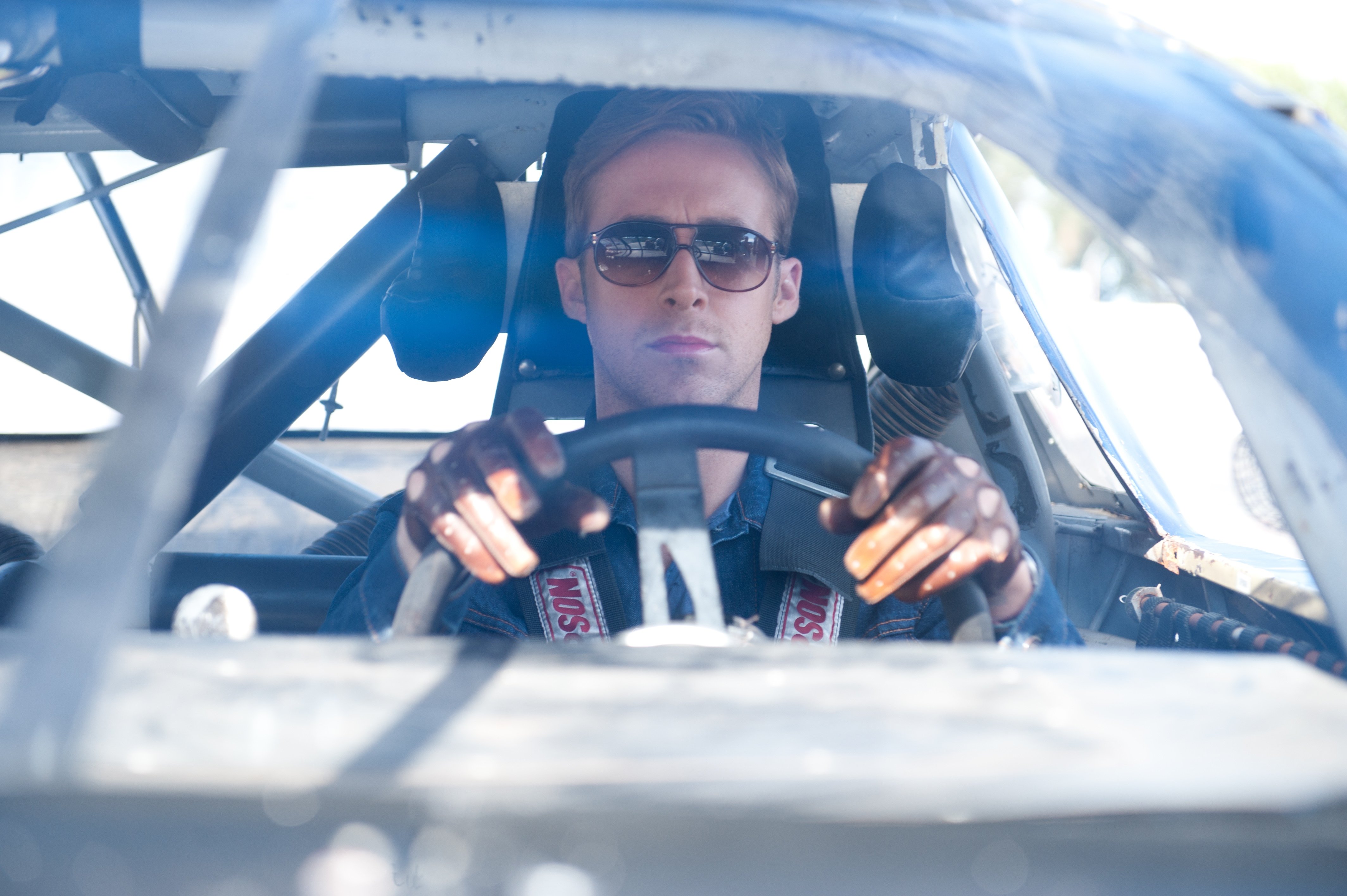
Visually and technically, I try to make every film different. We shot a lot of Drive in slow motion because I love that language.
Shooting with the Alexa was a blessing. I don’t see it as a replacement for 35mm negative, which is a unique thing we’ll never find a substitute for, but as another canvas.
I stipulated in my contract that my editor, Matt Newman, would edit the film with me. When we make the first cut, we make the movie incoherent just to see what it is not. By doing that, you can see if there might be other ways of putting the movie together. Then we start cutting it more as planned. It’s a constant discovery process, which I like.
Showing Drive at Cannes was very joyful because I’d been able to make the movie I wanted to make, which in itself is always a battle. I’d been nervous that working in Hollywood would mean I might not have the control I usually have. But Ryan had director approval, and he protected me — it was a similar situation to when Lee Marvin insisted on John Boorman directing Point Blank — and producers Adam Siegel and Marc Platt were also very respectful. There are a lot of smart people in Hollywood. I was in good hands.
Coming from Europe to make films in Hollywood, it’s almost like you’re living the dreams of all the European filmmakers who came to Hollywood from the very beginning. You can make your film within the system. There’s still hope.
AC previously spoke to Refn about his bleak historical drama Valhalla Rising (2009). And subsequently covered his collaboration with cinematographer Larry Smith, ASC, BSC on the revenge fantasy Only God Forgives (2013) and Natasha Braier, ASC, ADF on the surreal thriller The Neon Demon (2016).






